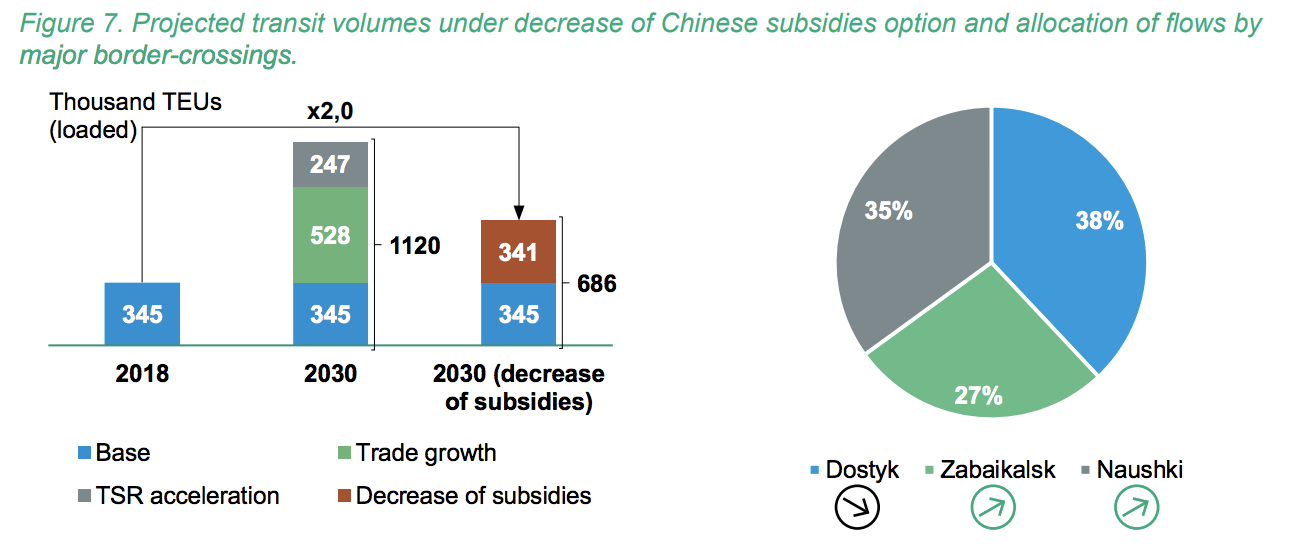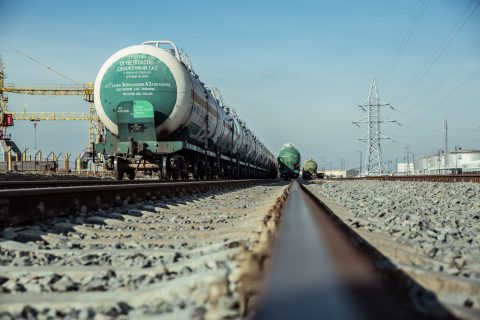UIC expects drastic impact of decline Chinese subsidies

The reduction of Chinese subsidies for rail transport between China and Europe is likely to have a drastic impact on traffic flows, concludes the UIC in its latest study on Eurasian corridor development. “A decrease of Chinese rail subsidies from 50 to 20 per cent will be a key stressing factor for the sustainability of the Eurasian rail transit system. This should lead to a reallocation of flows, market reshape and emergence of new services”, the report states.
UIC, a worldwide railway organisation published a new report titled Eurasian Corridors, Development Potential, in collaboration with IEC (Infrastructure Economic Centre) consultancy. It provides an analysis of the developments in recent years and an updated forecast of the Eurasian rail freight volumes up till 2030. Whereas previous studies were characterised by optimism, this report includes several possible challenges.
Response to subsidies
The report analyses the elasticity of the demand for rail freight transport in relation to the Chinese subsidies, the digitalisation of processes, border crossing improvements and speed of transit. According to the modelling results, rail transit is more sensitive to price than to speed, the report reads.
The reduction of Chinese subsidies is likely to have a drastic impact on traffic flows, it continues. “Southern routes via Kazakhstan are likely to be the first impacted and see their volumes decrease. This is due to the fact that most of the cargo currently transported heavily relies on subsidies which will then shift to sea, with the exception of commodities sensitive to time or requiring specific conditions of transportation (such as foodstuffs, machinery products, chemicals, etc.)”

Market reshape
The decrease in volumes on the route through Kazakhstan may be that new possibilities arise for market players on the northern routes, through Russia, the report suggests. Moreover, the decreasing competitiveness with deep sea by price may be compensated with new, additional services, such as e-services.
But also closer cooperation between business and governmental stakeholders may be desired. “As the survey presented in the study shows, a corridor-based approach is in high demand. Negative changes in flows may stimulate the realisation of such approach and its transfer from theoretical solutions to practical decisions and actions.”
Forecasts
The analysis of the possible response to the subsidy decline is important, as the forecasts are based on a positive and negative scenario. The decline of subsidies is one of these negative scenarios, as well as the impact of the coronavirus. The report forecasts 2030 volumes of less than 450,000 TEUs under a pessimistic scenario and unfavourable factors.
The forecast for an optimistic scenario is more than 2 million loaded TEUs in 2030, coupled with positive factors such as digitalisation, infrastructure improvements and support measure for rail transportation. For the purpose of the study, the baseline scenario, which forecasts TEU 872,000 by 2030 was the one on which the analysis was carried out.
You just read one of our premium articles free of charge
Want full access? Take advantage of our exclusive offer





